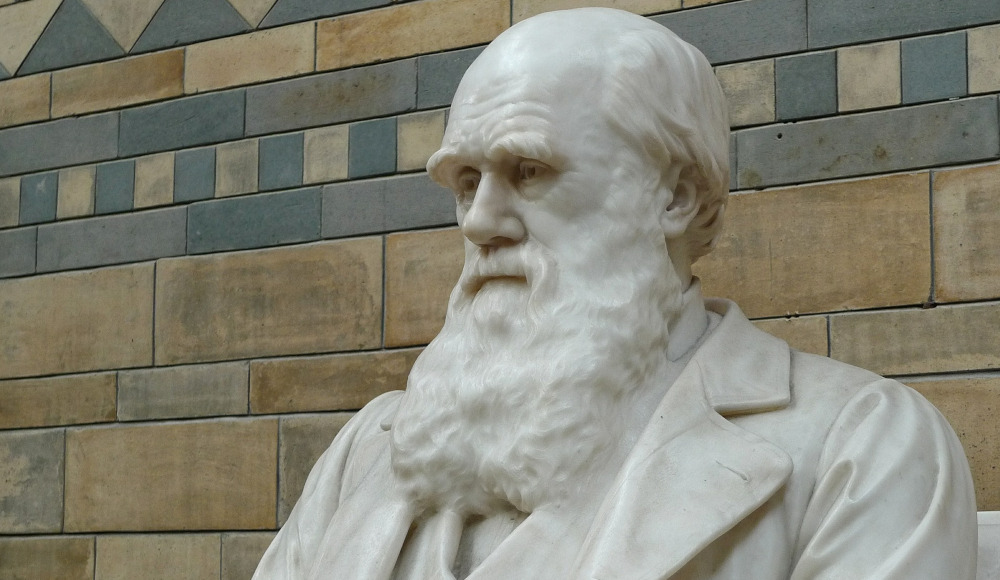
In this post, Dr Gillian McCay, assistant curator of the Cockburn Geological Museum, reflects on the importance of looking into the history of Earth Sciences in order to understand that the future is shaped by what has gone before…
Anyone who has put their toe in the waters of social media will be familiar with the vast array of inspirational quotes telling us things like, “Every second you spend dwelling on the past is a second of your present that you are missing”, or that, “You can’t have a better tomorrow if you are always thinking about yesterday”… Well, as much as these memes might provide good advice to some, I can personally say that I spend much of my working day, as both a geologist and a museum worker, thinking about the past.
Museum curation is perhaps not the first career that springs to mind when thinking of Earth Science, but it has definitely given me a whole new perspective on how we think about disciplines and how the history of a subject shapes current ideas, and even our approach to future research.
It a common misconception that earth science is subject about “cold, dead, things”, well yes, it may sometimes seem like a subject that lacks a human angle, but the history of the subject itself is populated by a host of interesting and colourful characters who were true interdisciplinary workers. And importantly: they weren’t all men! Several years ago while digging in a cabinet containing objects which belonged to Charles Lyell, I found a small box of rather grubby shells. Wondering if they had more information, I picked the shells out of the box only to see the words ‘Charles Darwin’ and ‘St Helena’! I can safely say this was one of the most unexpected occurrences! But what was Darwin doing sending Lyell shells?

Initially, I thought subjects were less defined in the past, more interdisciplinary; most gentlemen scientists of the 19th century would have considered themselves “naturalists”. But as I learned more about Lyell I discovered that his wife, Mary Horner Lyell, was a conchologist and geologist. She spoke French and German, and learned Spanish and Swedish, to improve scientific collaborations that she and her husband wished to pursue. Although she never became widely known in her own right, today it is believed by historians that Mary Horner Lyell made major contributions to her husband’s work (and possibly they even founding time to work together on the little shells in our collection). The Lyell’s may even have been considered one of the scientific power couples of their day, championing new ideas and facilitating debate in several languages, including heated discussions surrounding Darwin’s Theory of Natural Selection.
It is also easy to think of geology as a subject focused on things which happened millions of years ago, but it’s also important to remember that, as a whole, the study of geology is a relatively young subject. Let’s take, for example, the Theory of Plate Tectonics. This is taught in secondary schools all over the world, but what many people don’t appreciate is that this corner stone of how we think about the earth was not formalised until the late 1960’s. What is even more exciting is that some of the early work on this theory was carried out by Arthur Holmes, who went on to come one of the most decorated geologists, and who held the Regus Chair of Geology in Edinburgh from 1943-1956. In 1920, Holmes proposed that plate boundaries might lie beneath the sea, and he furthered this idea in 1928 by suggesting that convection currents within the mantle might be the force driving plate motion; ideas which seem every day to us, but were revolutionary at the time.
Holmes’ truly pioneering work, however, was the development of radiometric dating in 1913. This technique allowed earths scientists to discover the age of the earth, and provided the first quantifiable glimpse of the expanse of geological time. But even more mind-bending to the modern student of geology is that scientists were able to develop a method to expand the accepted timescale by billions of years nearly 50 years before they had any real concept of tectonic processes like subduction or sea-floor spreading!
The University of Edinburgh Centre for Research Collections holds a collection of medals which were awarded to Holmes during his life time, and the university also has original exam papers with questions set by Holmes. If you have ever wanted to test yourself, I recommend taking a look at some past papers – it will be eye-opening how much an earth science degree has changed over the decades!
So, although some may think that the past is over, I highly recommend diving into the history of a subject. Understand that the future is shaped by what has gone before. Investigate the hidden histories (or herstories) of unsung heroes, of the people who have gone before. And, most importantly, reflect on how the time-line of scientific discovery is never as linear as one imagines. Who knows what the next big theory in Earth Sciences will be: it might be earthquake prediction; it may be linked to sustainable energy resources; or it might be something completely unexpected.
Save Charles Lyell’s Notebooks
Charles Lyell’s 294 notebooks, currently in private hands, are due to be sold abroad. the University are trying to raise enough funds by 15th July to secure an extension to 15th October, the final deadline to save the Lyell notebooks. To find out more please visit: https://www.ed.ac.uk/giving/save-lyell-notebooks


